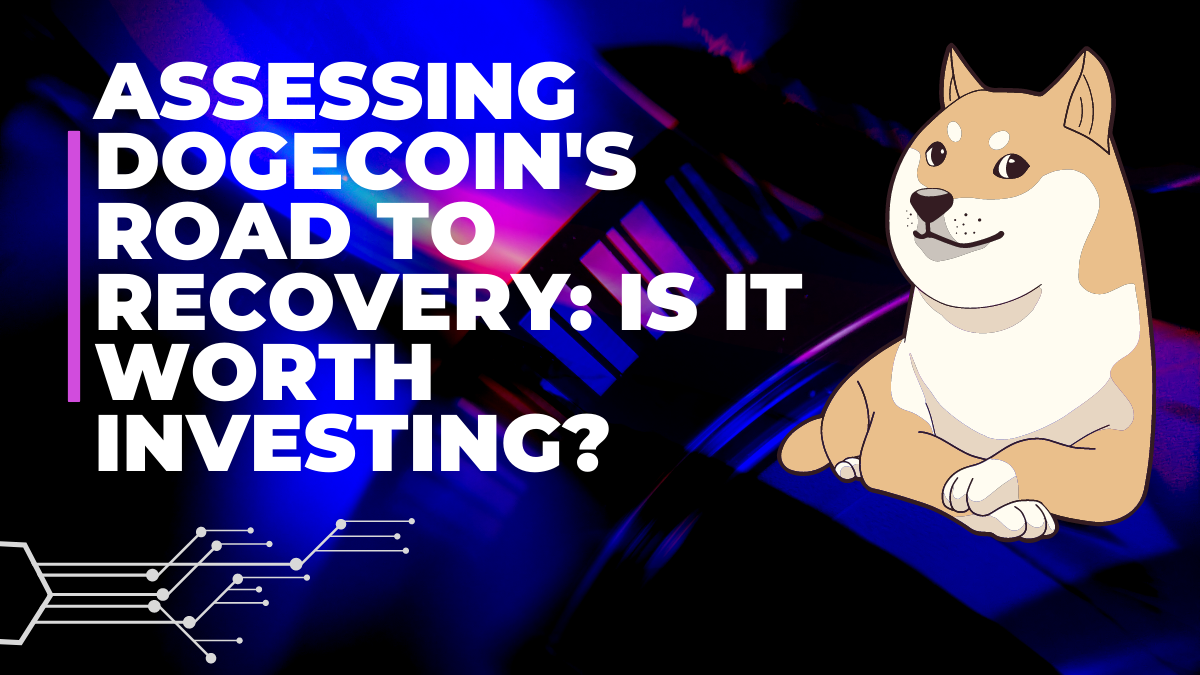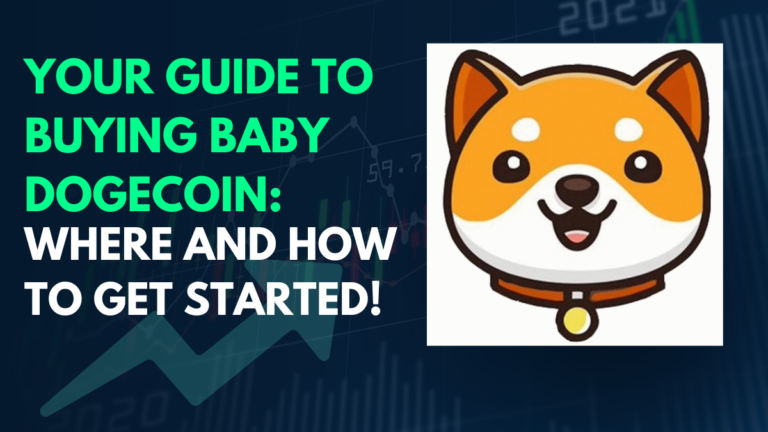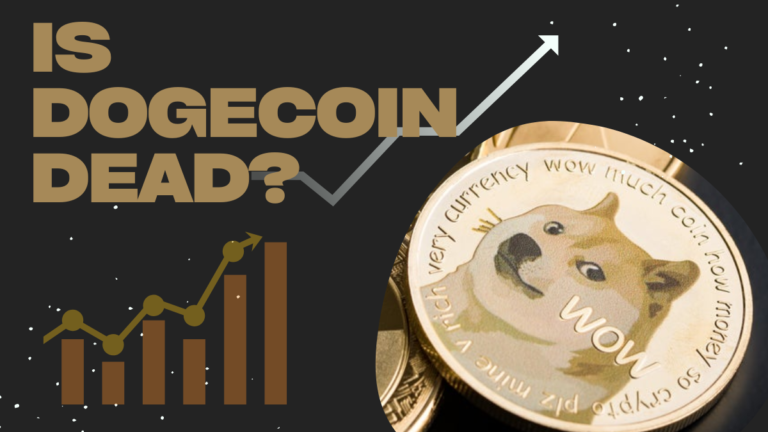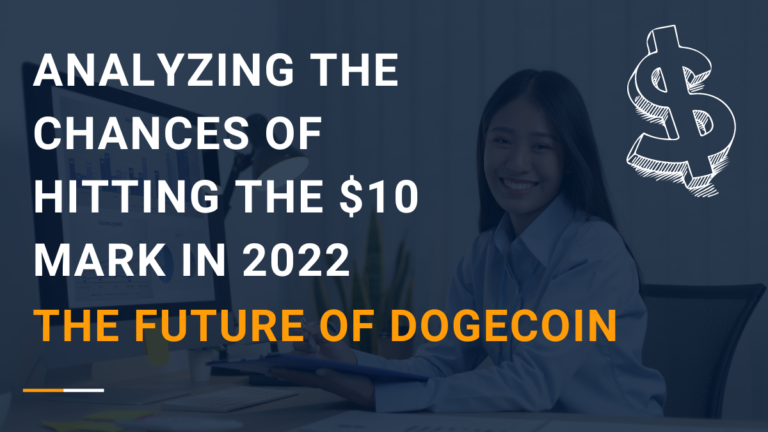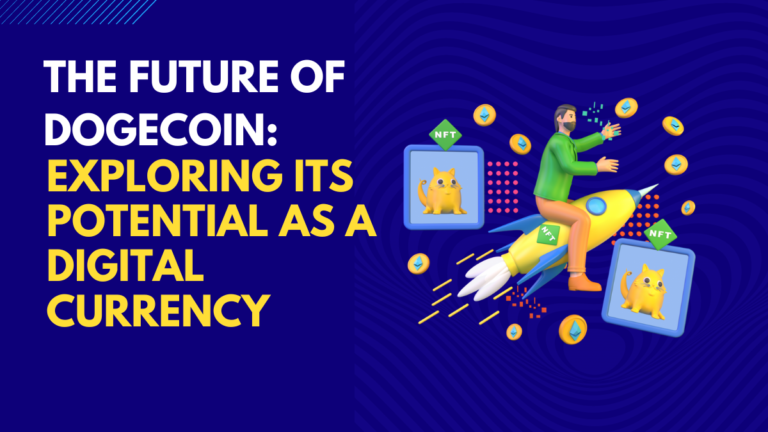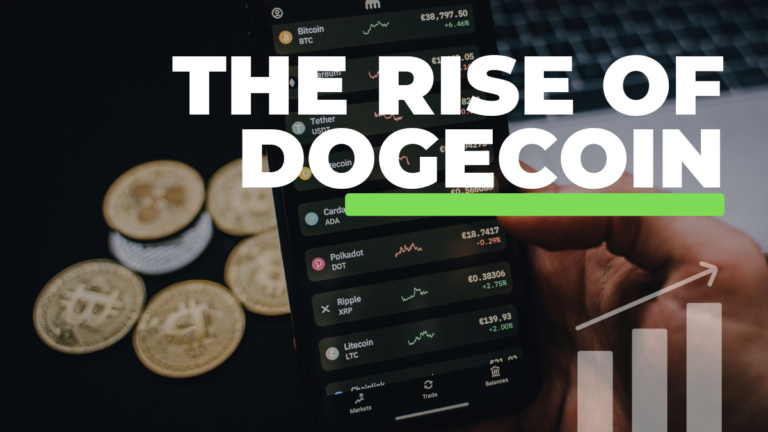Assessing Dogecoin’s Road to Recovery: Is It Worth Investing?
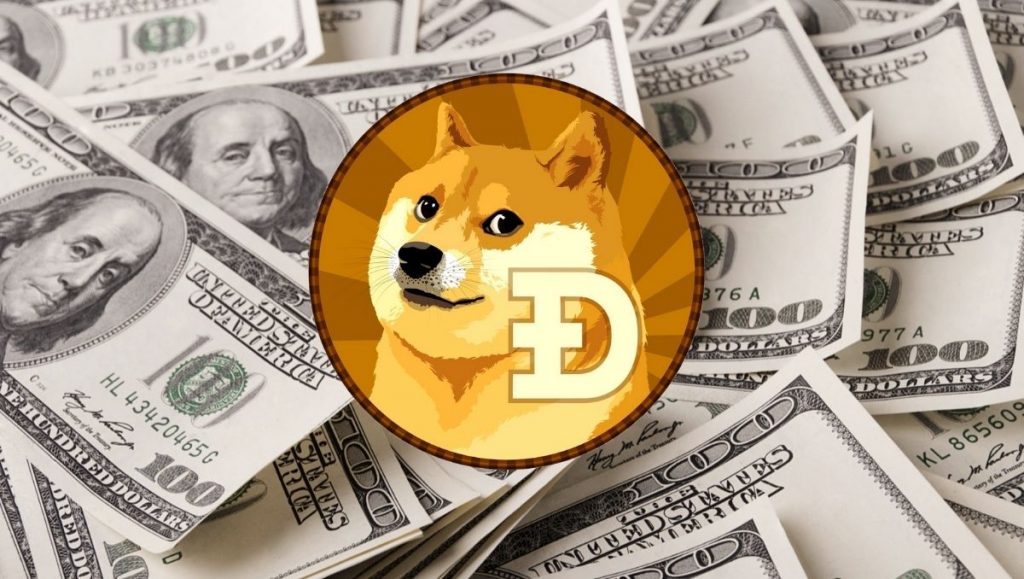
Welcome, fellow investors and crypto enthusiasts! If you’ve been keeping an eye on the tumultuous world of digital currencies, then Dogecoin needs no introduction. From its humble beginnings as a lighthearted meme coin to becoming a surprising force in the cryptocurrency market, Dogecoin has captured the attention of millions.
But what’s next for this quirky little coin? In this blog post, we will dive deep into assessing Dogecoin’s road to recovery and answer the pressing question on everyone’s minds: Is it worth investing? So buckle up and get ready to explore the fascinating journey of Dogecoin – your next potential investment opportunity!
Table of Contents
What is Dogecoin?

Dogecoin is a decentralized, peer-to-peer digital currency that enables you to easily send money online. Based on the popular “doge” Internet meme, Dogecoin was created with an intention to reach a broader demographic than Bitcoin.
However, Dogecoin has also become popular among cryptocurrency enthusiasts and is often used for tipping or charitable donations. Although it is not as valuable as other cryptocurrencies, Dogecoin remains a popular choice for many investors.
Causes of Dogecoin Losses
When it comes to Dogecoin, there are a number of different causes that can lead to losses. One of the most common is simply selling off too early. Many investors get into Dogecoin when it’s hot, and then sell as soon as it starts to cool down. This leads to them missing out on any potential rebound that might occur.
Another cause of Dogecoin losses can be found in what’s known as “pump and dumps”. These are situations where investors artificially inflate the price of a coin through buying and selling in large quantities, before “dumping” their coins onto the market and causing the price to crash. These activities can leave other investors nursing significant losses.
Another factor that can lead to losses when investing in Dogecoin is simply bad luck. The crypto markets are notoriously volatile, and even the best-performing assets can see sudden dips without warning. This means that even if you’re holding onto your Dogecoins for the long run, you could still end up making a loss if the market takes a turn for the worse.
The Impact of Elon Musk
It’s been a tough few weeks for Dogecoin. The beloved meme-based cryptocurrency has seen its value plummet, at one point losing over 50% of its value in just 24 hours. This market crash was precipitated by a number of factors, including but not limited to:
- Elon Musk’s Tesla announcement that it would no longer accept Bitcoin as payment for its vehicles
- China’s crackdown on cryptocurrency trading
- The overall bearishness of the crypto market
While some investors have given up on Dogecoin, writing it off as a failed experiment, others remain bullish on the coin’s future. They believe that Dogecoin still has a lot of potential and that the current market downturn is simply a bump in the road. One key factor in Dogecoin’s favor is its large and passionate community of supporters, who are constantly championing the coin and working to increase its adoption.
Another factor working in Dogecoin’s favor is Elon Musk himself. While Musk’s recent comments about Dogecoin being a “hustle” may have spooked some investors, it’s important to remember that he is still one of the biggest supporters of the coin.
In fact, just a few days after his “hustle” comment, Musk tweeted out that he was working with the Dogecoin team on making transactions faster and more efficient. This shows that he continues to believe in the project and is still committed to helping it succeed .
Ultimately, the impact of Elon Musk on Dogecoin has been complex. While some of his recent comments have certainly contributed to its falling value, it’s important to remember that he still believes in the project and is working tirelessly to promote it. As long as he sticks with Dogecoin, his influence should continue to be felt in a positive way .
Examining Dogecoin’s Challenges and Opportunities
Dogecoin, like any decentralized cryptocurrency, is subject to a number of challenges and opportunities. The most pressing challenge for Dogecoin is its scalability; at present, the network can only handle around 10 transactions per second (TPS), compared to Bitcoin’s maximum TPS of 7. This limited scalability has led to a number of congestion issues on the Dogecoin network, with transaction fees rising and confirmation times lengthening during periods of high traffic.
The other major challenge facing Dogecoin is its lack of development activity. Since 2016, there has been very little in the way of updates or new features added to the Dogecoin protocol. This stagnation has led many to believe that Dogecoin is no longer a viable project, and has contributed to the recent decline in its price.
Despite these challenges, there are also a number of opportunities that present themselves to Dogecoin. Firstly, due to its low price and high supply (there are currently over 120 billion DOGE in circulation), Dogecoin is well-suited for use as a tipping currency on social media platforms like Reddit and Twitter.
Secondly, the project has a large and passionate community which could be leveraged to promote wider adoption of Dogecoin as a payment currency. As Bitcoin and other cryptocurrencies continue to gain mainstream traction, it is likely that some of this attention will spill over into altcoins like Dogecoin, helping to boost its price.
Analyzing the Potential for a Recovery
After taking a tumble in recent months, Dogecoin has shown signs of potential recovery. Is it worth investing in the currency? Let’s take a look at the data to find out.
Dogecoin’s price is down significantly from its all-time high, but it has found some stability around the $0.005 mark. The currency’s 24-hour trading volume is also down from its peak, but is still relatively high at around $160 million.
One reason for optimism is that Dogecoin’s hash rate, or the computing power used to mine new blocks, has remained relatively steady despite the price decline. This suggests that miners are still confident in the long-term prospects of the currency.
Another encouraging sign is that Dogecoin’s active address count has been steadily rising in recent months. This indicates that more people are using the currency, which could lead to increased demand and higher prices.
Of course, there are no guarantees in the world of cryptocurrency, and it remains to be seen whether Dogecoin will make a full recovery. However, the signs are certainly encouraging for investors who are considering adding the currency to their portfolios.
Benefits of Investing in Dogecoin
Dogecoin has been on a rollercoaster ride over the past year, and its price has fluctuated wildly. Despite this volatility, there are some good reasons to believe that Dogecoin is a good investment.
- Dogecoin is one of the most popular cryptocurrencies, and it has a large and active community. This means that there is high demand for Dogecoin, which can lead to price appreciation.
- Dogecoin is divisible, meaning that it can be bought in smaller units if desired. This makes it more accessible and easier to trade than some other cryptocurrencies.
- Dogecoin has low transaction fees, making it a cheaper option than Bitcoin for making payments.
- Dogecoin has a solid development team and roadmap, which gives investors confidence that the currency will continue to be supported and improve over time.
Risks Associated with Investing in Dogecoin
There are a few risks associated with investing in Dogecoin that potential investors should be aware of before putting their money into the cryptocurrency. First, Dogecoin is a relatively new coin and thus has little to no track record. This means that it is more volatile and risky than established coins such as Bitcoin or Ethereum.
Secondly, Dogecoin is not backed by any government or central authority, meaning that there is no guarantee that it will retain its value over time. Because Dogecoin is not as widely used or accepted as other cryptocurrencies, it may be harder to convert back into fiat currency if you decide to sell your holdings.
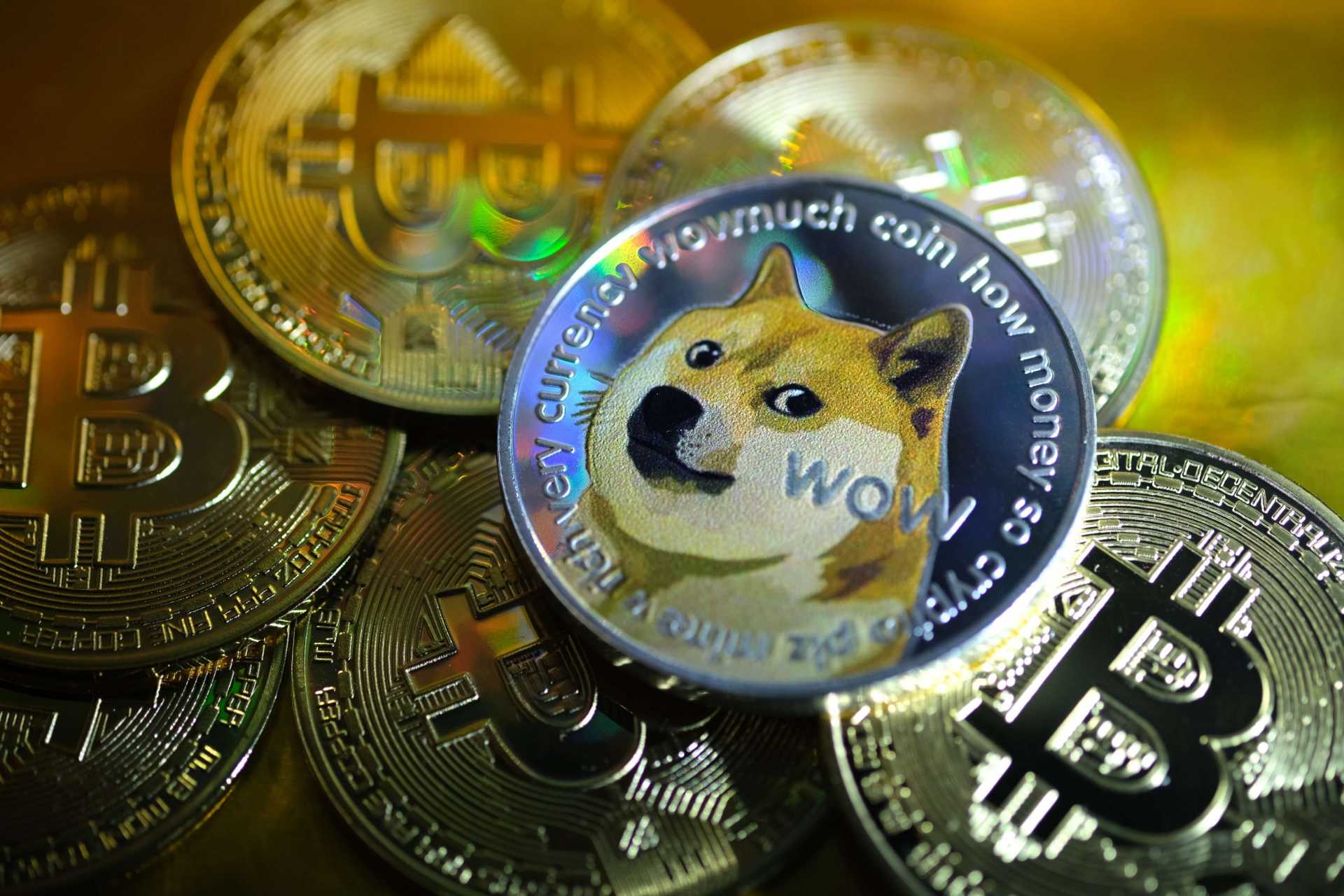
Alternatives to Investing in Dogecoin
Investing in cryptocurrency can be a risky endeavor. The value of Bitcoin, Ethereum, and other digital assets have fluctuated wildly over the past year, and there’s no guarantee that trend will continue. For those looking to avoid the volatility of the crypto markets, there are several alternatives to investing in Dogecoin.
One option is to invest in companies that are involved in the cryptocurrency industry. These include businesses that provide software or hardware for mining, exchanges that facilitate trading, and payments processors that allow businesses to accept crypto as payment. While these companies may be affected by changes in the value of digital assets, they are less likely to experience the same level of volatility as coins like Dogecoin.
Another alternative is to invest in traditional assets such as stocks, bonds, and real estate. These asset classes have proven to be relatively stable over time and offer diversification away from the highly volatile world of cryptocurrencies.
Investors looking for exposure to Dogecoin without owning the actual coin can also consider investing in futures contracts. Futures contracts are agreements to buy or sell an asset at a set price at a future date.
While futures contracts can be traded on margin (with leverage), they typically require less capital than buying the actual asset would. This makes them an attractive option for investors looking to limit their risk while still gaining exposure to Dogecoin’s price movements.

Conclusion
In conclusion, Dogecoin has been through a volatile period in its relatively short journey as a crypto asset. Though there are still plenty of risks to consider before jumping into the Dogecoin market, it clearly remains an intriguing opportunity for savvy investors who don’t mind taking calculated risks and gaining some experience with cryptocurrency trading.
That being said, you should always do your own research, assess all potential investments critically and make sure that high-risk ones like these are only done on money you can afford to lose; never borrow or go into debt to cover such purchases.
